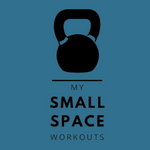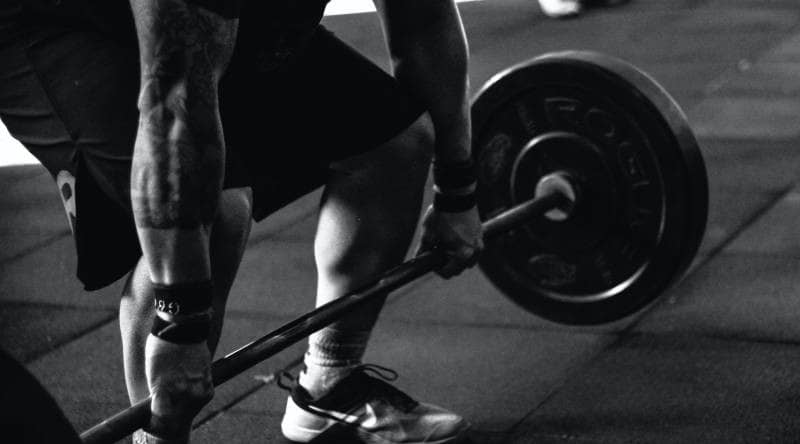If you’ve ever pushed yourself to the limit in the gym, you’re probably familiar with the feeling of sore muscles the next day. But does this soreness mean that you’re making progress and growing stronger? The answer isn’t necessarily straightforward, but in this blog post, we’ll explore the connection between sore muscles and muscle growth. We’ll also provide tips for maximizing your muscle growth while minimizing soreness, as well as answer some frequently asked questions about this topic. Whether you’re a seasoned athlete or just starting out on your fitness journey, understanding the relationship between sore muscles and muscle growth can help you reach your goals more effectively. So, without further ado, let’s break this down.
I highly recommend the stretching program linked in this article, as it has helped me achieve excellent results (see my review here). By purchasing the program, you’ll not only improve your flexibility and sooth those aching muscles, but also support mysmallspaceworkouts by contributing to its maintenance costs. I appreciate your support and believe that you will see significant improvement in your flexibility within 30 days of following the program.
What are sore muscles and why do they occur?
It’s normal for people who train to experience delayed onset muscle soreness, or DOMS as it is commonly abbreviated. The pain of DOMS can be quite debilitating, especially if a person is new to exercise or is starting to get back into lifting after a period away from exercise.
Although much is yet to be understood about Delayed Onset Muscle Soreness (DOMS), this paper provides a comprehensive overview of the current leading theories and research on the subject.
- Delayed onset muscle soreness (DOMS) is a common experience for athletes and can range in severity from muscle tenderness to severe pain.
- The exact mechanisms and impact on athletic performance of DOMS are not fully understood, but it is thought to be related to muscle micro-injury and inflammation.
- DOMS is most commonly experienced at the beginning of the sporting season or when introducing new types of activities.
- The intensity and duration of exercise, as well as the type of muscle action (eccentric activities in particular), can influence the onset of DOMS.
- DOMS can impact athletic performance by reducing joint range of motion and muscle function.
- There are various treatment strategies for DOMS, but exercise and nonsteroidal anti-inflammatory drugs have shown the most effectiveness.
- To prevent DOMS, it is recommended to introduce new exercises or activities gradually and to reduce the intensity and duration of exercise following DOMS-inducing activities.
The link between sore muscles and muscle growth
The link between sore muscles and muscle growth is a topic that has long been debated in the fitness community.
On the one hand, it’s natural to assume that sore muscles are a sign of progress and that the more soreness you experience, the more your muscles are growing.
On the other hand, some experts argue that soreness is not necessarily an indicator of muscle growth and that it can even inhibit your ability to work out and make progress.
So what’s the truth? To understand the link between sore muscles and muscle growth, it’s important to first understand what causes muscle soreness.
Delayed Onset Muscle Soreness (DOMS) is a type of muscle soreness that occurs a day or two after a particularly intense workout or when you engage in a new type of physical activity.
It is thought to be caused by micro-tears in the muscle fibers and inflammation in the muscle tissue.
While it’s true that muscle growth occurs as a result of these micro-tears and the body’s repair and rebuilding process, there is no direct correlation between the severity of muscle soreness and the extent of muscle growth.
In other words, just because you’re feeling extremely sore after a workout doesn’t necessarily mean that you’re experiencing more muscle growth than if you had less soreness.
In fact, excessive muscle soreness can actually inhibit muscle growth by preventing you from working out at full intensity or at all. If you’re too sore to complete your workouts, you may not be able to stimulate muscle growth as effectively.
This is why it’s important to find a balance and not push yourself too hard in the gym, especially if you’re just starting a new exercise program.
While it’s natural to assume that sore muscles are a sign of progress and that the more soreness you experience, the more your muscles are growing, recent research suggests that the link between muscle soreness and muscle growth is more complex.
For instance, this scientfic review of recent research suggests that in the early stages of resistance training, muscle swelling caused by muscle damage may contribute to muscle growth. However, true muscle growth may not occur until later stages of training.
Increases in muscle protein synthesis, or the production of new proteins in the muscles, may contribute to muscle growth after training, but only when muscle damage is minimal.
Resistance training that does not cause significant muscle damage can still lead to similar muscle growth and strength improvements as those that do. Therefore, it is not clear if muscle damage is the main factor that causes muscle growth during resistance training.
In conclusion, while there is a link between muscle soreness and muscle growth, it’s not as straightforward as you might think. Soreness is a natural part of the muscle building process, but it’s important to find a balance and not let it inhibit your progress.
How to manage sore muscles for optimal muscle growth
We found an interesting paper from 2020 which questions the traditional understanding about DOMS. The key takeaways are:
- DOMS may actually be caused by compression of the nerve endings in the muscle spindle due to repetitive eccentric contractions under cognitive demand.
- DOMS may be accompanied by microinjury of surrounding tissues and enhanced by immune-mediated inflammation.
- DOMS is initially masked by sympathetic nervous system activity, but once it subsides, a safety mode comes into play to prevent further injury.
- Reactive oxygen species and nitric oxide may play a role in the degeneration-regeneration mechanisms of injured tissues in DOMS.
- Exercises that reduce neuropathic pain and have an anti-inflammatory effect, known as “closed gate exercises,” may have therapeutic importance in managing DOMS.
- DOMS may have an evolutionary role in enhancing the ability to escape danger and trigger muscle growth.
Did you spot number 5? Closed gate exercises may help manage DOMS.
But what exactly are closed gate exercises, and how do they work to manage DOMS?
It’s worth noting that the term “closed gate exercises” is not well-established in the scientific literature. While these exercises are often described as low-impact and focused on slowly contracting and relaxing the muscles, there is a lack of specific guidance on the specfics of these exercises.
That being said, it’s possible that low-impact exercises that promote blood flow and muscle recovery, such as gentle stretching, foam rolling, and low-impact cardio, may have some benefit in reducing pain and inflammation associated with DOMS.
These types of exercises may also have an anti-inflammatory effect, which can help to reduce swelling and discomfort.
An evening recovery routine for Delayed Onset Muscle Soreness (DOMS) could include the following steps:
- Take a warm shower or bath: Warm water can help to relax sore muscles and increase blood flow, which can aid in recovery. Avoid running the bath too hot, as it can increase inflammation.
- Stretch gently: Gentle stretching can help to improve flexibility and reduce muscle tension. Hold each stretch for 15-30 seconds, and avoid bouncing or pushing too hard. Get the ultimate stretch program here.
- Use a foam roller: A foam roller can help to massage sore muscles and improve blood flow. Roll over the affected area for a few minutes at a time, applying moderate pressure.
- Get a good night’s sleep: Adequate sleep is important for muscle recovery. Aim for 7-9 hours of sleep per night, and try to get to bed at a consistent time each night.
By incorporating these steps into your evening routine, you can help to reduce the severity of DOMS and promote muscle recovery.
Tips for maximizing muscle growth while minimizing soreness
Sore muscles can be a natural part of the muscle building process, but that doesn’t mean you have to suffer through intense discomfort in order to see progress. By following these tips, you can maximize muscle growth while minimizing soreness and discomfort.
- Start slowly: When starting a new exercise program or increasing the intensity of your workouts, it’s important to progress gradually to give your muscles time to adapt. This will help to minimize muscle soreness and prevent injury.
- Use proper form: Proper form is essential for maximizing muscle growth and minimizing soreness. Make sure to use correct technique and listen to your body to avoid overstressing your muscles.
- Incorporate variety: Varying your workouts can help to prevent muscle imbalances and reduce the risk of overuse injuries. Mixing up your exercises and training different muscle groups on different days can will enable you to train around DOMS as well as help keep your workouts interesting and prevent boredom.
- Get enough protein: Adequate protein intake is important for muscle growth and recovery. Aim to consume 1-1.5 grams of protein per pound of body weight each day, and consider using a protein supplement if you have trouble meeting your protein needs through food alone.
- Stay hydrated: Proper hydration is essential for muscle function and recovery. Make sure to drink plenty of water throughout the day and during your workouts.
- Take rest days: It’s important to allow your muscles time to rest and recover between workouts. Aim for at least one full rest day per week, and consider incorporating active recovery activities such as pilates or gentle stretching on your off days.
- Use foam rolling: Foam rolling can help to improve blood flow and reduce muscle tension, which can aid in the recovery from DOMS.
- Use ice or heat: Applying ice or heat to sore muscles can help to reduce inflammation and numb pain. Ice is best for acute soreness, while heat can be helpful for chronic soreness.
- Try massages: Massages can help to increase blood flow and improve muscle recovery. Consider booking a professional massage or using a massage tool to work out knots and tension in your muscles.
- Stay consistent: Consistency is key when it comes to maximizing muscle growth and minimizing soreness. Stick to a regular workout routine and make sure to incorporate adequate rest and recovery into your schedule. This will help to prevent overtraining and keep your muscles healthy and strong. Additionally, staying consistent in your workouts and incorporating rest and recovery into your routine will help prevent you from having to start from scratch in your conditioning, where muscle soreness can be especially intense.
Maximizing Muscle Growth and Minimizing Soreness
In conclusion, while it’s natural to assume that muscle soreness is a sign of progress and that the more soreness you experience, the more your muscles are growing, the link between muscle soreness and muscle growth is still not fully understood. While muscle soreness is a normal part of the muscle building process, there are various strategies you can use to minimize soreness and maximize muscle growth, such as proper technique, enough protein, foam rolling, massages, and consistency. Remember to listen to your body and allow yourself adequate rest and recovery to maintain healthy muscles and prevent overtraining.


